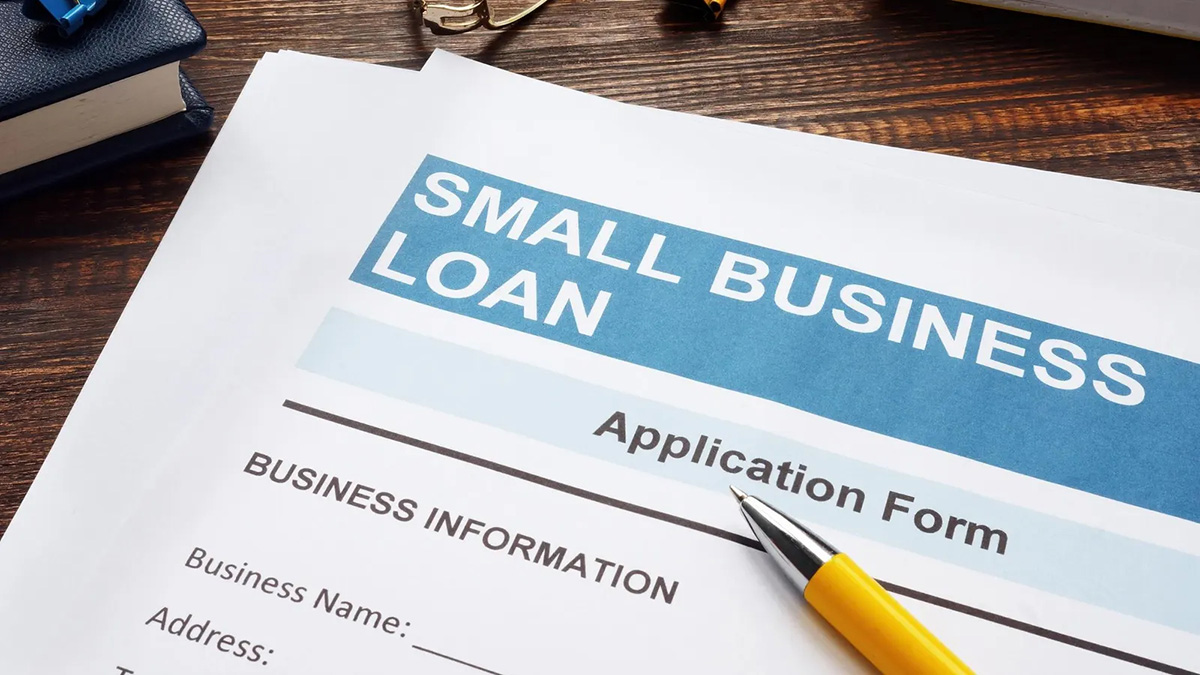Home>Finance>How To Get A Small Business Loan With Bad Credit And No Collateral


Finance
How To Get A Small Business Loan With Bad Credit And No Collateral
Modified: February 21, 2024
Looking for finance options for your small business? Learn how to secure a loan with bad credit and no collateral to fuel your growth and success.
(Many of the links in this article redirect to a specific reviewed product. Your purchase of these products through affiliate links helps to generate commission for LiveWell, at no extra cost. Learn more)
Table of Contents
- Introduction
- Understanding Small Business Loans
- Challenges of Obtaining a Loan with Bad Credit and No Collateral
- Steps to Get a Small Business Loan with Bad Credit and No Collateral
- Alternative Funding Options for Small Businesses with Bad Credit and No Collateral
- Tips for Improving Your Chances of Getting a Loan with Bad Credit and No Collateral
- Conclusion
Introduction
Starting a small business requires capital, and securing a business loan is a common way to access the funding necessary for growth and success. However, if you have bad credit and no collateral, obtaining a loan can seem like an insurmountable challenge.
Having bad credit means you have a low credit score, making lenders hesitant to approve your loan application. Additionally, not having collateral to offer as security for the loan puts you at a disadvantage, as lenders typically require collateral to minimize their risk.
While these challenges can make securing a small business loan more difficult, it is not impossible. In this article, we will explore the steps you can take to increase your chances of getting a small business loan with bad credit and no collateral. We will also discuss alternative funding options and provide tips for improving your creditworthiness.
Remember, building a successful business requires perseverance and resourcefulness. By utilizing the strategies outlined in this article, you can overcome the obstacles of bad credit and lack of collateral, paving the way for the financial support your small business needs.
Understanding Small Business Loans
Before diving into the details of obtaining a small business loan with bad credit and no collateral, it’s essential to understand the fundamentals of small business loans. A small business loan is a sum of money borrowed from a lender with the intention of using it to fund various business needs. These needs can include purchasing inventory, expanding operations, hiring employees, or covering day-to-day expenses.
Small business loans typically come in two forms: secured and unsecured. Secured loans require collateral, which is an asset that the borrower pledges as a security for the loan. This collateral can be in the form of real estate, equipment, or other valuable assets. Unsecured loans, on the other hand, do not require any collateral and are solely based on the borrower’s creditworthiness.
Lenders evaluate the creditworthiness of borrowers by looking at their credit scores and credit histories. A credit score is a numerical representation of an individual’s creditworthiness, and it ranges from 300 to 850. The higher the credit score, the better the chances of securing a loan with favorable terms. Lenders also consider the borrower’s business plan, industry experience, and financial statements when making lending decisions.
It’s important to note that small business loans come with various interest rates, repayment terms, and fees. Interest rates can be fixed or variable and are calculated based on the risk the lender assumes. Repayment terms can range from a few months to several years, and fees can include application fees, origination fees, and prepayment penalties.
Obtaining a small business loan can be a significant step towards achieving your business goals, but it’s crucial to thoroughly understand the terms and conditions before committing to a loan. Take the time to research and compare different lenders, considering factors such as interest rates, repayment flexibility, and customer reviews.
In the following sections, we will explore the challenges you may face when seeking a small business loan with bad credit and no collateral, and provide actionable steps to improve your chances of approval.
Challenges of Obtaining a Loan with Bad Credit and No Collateral
Securing a small business loan can already be a daunting task, but when you have bad credit and no collateral, the challenges become even more significant. Here are some of the hurdles you may encounter when seeking a loan with these circumstances:
- Limited options: Traditional lenders, such as banks and credit unions, typically have strict lending criteria that include a minimum credit score requirement and collateral. With bad credit and no collateral, your options may be limited, as these lenders may perceive you as a higher risk borrower.
- Higher interest rates: If you are able to secure a loan with bad credit and no collateral, expect higher interest rates. Lenders charge higher rates to compensate for the increased risk they are taking by lending to borrowers with a poor credit history and no collateral.
- Lower loan amounts: Lenders may be more cautious when lending to borrowers with bad credit and no collateral, resulting in lower loan amounts. This can limit your ability to finance larger business expenses or growth opportunities.
- Stricter loan terms: Lenders may impose stricter loan terms, such as shorter repayment periods or more frequent payments, to mitigate their risk. These tighter terms can add additional financial pressure to your business.
- Negative impact on credit: Applying for loans and getting rejected can have a negative impact on your credit score. This makes it crucial to carefully review your options and only apply for loans that you have a reasonable chance of getting approved for.
While these challenges may seem discouraging, it’s important to remember that there are still pathways to obtain a small business loan even with bad credit and no collateral. Alternative funding options and specific strategies can help improve your chances of securing the financing your business requires.
In the next section, we will discuss the steps you can take to increase your chances of getting a small business loan with bad credit and no collateral.
Steps to Get a Small Business Loan with Bad Credit and No Collateral
While obtaining a small business loan with bad credit and no collateral presents challenges, it is not an impossible feat. By taking the following steps, you can increase your chances of securing the funding your business needs:
- Improve your credit score: Although it may take time, improving your credit score is one of the most effective ways to enhance your loan eligibility. Pay your bills on time, reduce debts, and dispute any inaccuracies on your credit report. Consider working with a credit counselor to develop a plan to rebuild your credit.
- Prepare a comprehensive business plan: A well-prepared business plan can demonstrate your competence as a business owner and your ability to repay the loan. Outline your business goals, strategies, financial projections, and how you plan to utilize the loan funds. This can instill confidence in lenders, boosting your chances of approval.
- Seek out lenders specializing in bad credit loans: Some lenders specialize in providing loans to borrowers with bad credit. Research and identify these lenders, as they may be more lenient in their lending criteria. However, be cautious of predatory lenders who may charge exorbitant interest rates or impose unfair terms.
- Explore alternative lenders: Alternative lenders, such as online lenders and peer-to-peer lending platforms, may have more flexible lending criteria compared to traditional banks. They may consider factors beyond your credit score, such as revenue history, industry experience, and business performance. Research reputable alternative lenders and compare their offers to find the best fit for your business needs.
- Offer strong financial documentation: Even with bad credit, providing strong financial documentation can improve your loan prospects. Prepare detailed financial statements, including profit and loss statements, balance sheets, and cash flow statements. These documents can demonstrate the financial stability of your business and your ability to manage loan repayments.
- Consider a cosigner or guarantor: Having a cosigner or guarantor with a strong credit history and collateral can significantly increase your chances of getting approved for a loan. A cosigner is someone who agrees to repay the loan if you default, while a guarantor provides additional security for the lender. Make sure to discuss the responsibilities and implications with the potential cosigner or guarantor before proceeding.
Remember, the key to obtaining a small business loan with bad credit and no collateral is to present yourself as a low-risk borrower. By taking proactive steps to improve your creditworthiness and exploring alternative funding options, you can enhance your chances of securing the financing your business needs.
In the next section, we will explore alternative funding options for small businesses with bad credit and no collateral.
Alternative Funding Options for Small Businesses with Bad Credit and No Collateral
If traditional small business loans are not available to you due to bad credit and no collateral, there are alternative funding options that can still provide the capital your business needs. While these options may have different eligibility criteria and terms, they can serve as viable alternatives:
- Microloans: Microloans are small loans typically offered by nonprofit organizations or community lenders. These loans are designed to support small businesses that may not qualify for traditional bank loans. Microloans usually have lower loan amounts and more flexible lending criteria, making them accessible for businesses with bad credit and no collateral.
- Invoice financing: If your business issues invoices for goods or services, invoice financing can be an option. With invoice financing, a lender advances you a percentage of the invoice value, and you repay the lender once your customers pay their invoices. This type of financing focuses more on your customers’ creditworthiness than your own.
- Merchant cash advances: Merchant cash advances provide a lump sum payment based on your business’s future credit and debit card sales. This option is suitable for businesses that primarily accept card payments. Repayment is made through a percentage of daily sales, and while it can be an expensive option, it can provide quick access to funds with no collateral required.
- Crowdfunding: Crowdfunding platforms allow businesses to raise funds from a large number of individuals who believe in their product or service. By creating a compelling campaign and offering rewards or equity in return, you can attract investors and secure the necessary funding. Crowdfunding can also help validate your business idea and build a customer base.
- Grants and competitions: Research and apply for business grants and competitions specific to your industry or location. These opportunities provide funding without the need for repayment and can also offer valuable networking and exposure opportunities for your business.
- Bootstrapping: While not a traditional funding option, bootstrapping involves using your own personal funds or reinvesting profits from the business to finance your operations. While it may require a longer timeline for growth, this self-funding approach allows you to maintain full control over your business and avoid taking on debt.
It’s important to carefully evaluate the terms and requirements of each alternative funding option and choose the one that best suits your business’s needs and goals. Be mindful of the costs, repayment terms, and potential impact on your business’s cash flow.
Now that we’ve explored alternative funding options, let’s move on to the next section, where we’ll provide tips for improving your chances of getting a loan with bad credit and no collateral.
Tips for Improving Your Chances of Getting a Loan with Bad Credit and No Collateral
Even if you have bad credit and no collateral, there are steps you can take to increase your chances of getting a small business loan. Implementing the following tips can help strengthen your loan application and improve your overall creditworthiness:
- Build a strong personal and business credit history: Focus on improving your credit score by making timely payments and reducing existing debts. Establish a solid payment history with vendors and suppliers to build a positive credit profile for your business.
- Show consistent business revenue and cash flow: Lenders want to see that your business has a stable and growing revenue stream. Provide comprehensive financial statements, such as profit and loss statements and cash flow projections, to demonstrate your business’s ability to generate consistent cash flow.
- Seek credit lines with suppliers and vendors: Building good credit relationships with suppliers and vendors can help improve your creditworthiness. Request credit lines and make regular payments on time to demonstrate your ability to manage credit responsibly.
- Consider a business credit card: Using a business credit card responsibly can help establish and improve your credit history. Make regular payments and keep your credit utilization low to show that you are a responsible borrower.
- Provide a detailed business plan: A well-crafted business plan demonstrates your commitment to your business’s success and your ability to repay the loan. Highlight your industry knowledge, market analysis, and growth strategies to instill confidence in lenders.
- Showcase industry experience and expertise: If you have relevant industry experience, emphasize it in your loan application. Lenders may view your expertise as an advantage when assessing your ability to manage business finances and repay the loan.
- Seek advice from a financial professional: Consider consulting with a financial advisor or credit counselor. They can provide valuable insights, help you understand your financial situation, and guide you in improving your creditworthiness.
- Prepare a strong loan application: Pay attention to the details of your loan application. Be thorough, provide all required documentation, and explain any mitigating circumstances surrounding your bad credit or lack of collateral.
- Practice effective communication with lenders: Maintain open and transparent communication with potential lenders. Clearly explain your business’s financial situation and showcase any positive developments or strategies you have implemented to address credit challenges.
- Consider building a relationship with lenders: Establishing a relationship with a lender can be beneficial in the long run. If one lender denies your loan application, ask for feedback and request recommendations for improvement. This can guide you in making necessary changes to increase your chances of approval in the future.
Remember, improving your creditworthiness takes time and consistent effort. By implementing these tips, you can enhance your chances of obtaining a small business loan with bad credit and no collateral.
In the concluding section, we’ll recap the key points and emphasize the importance of resilience and determination in securing the funding your small business needs.
Conclusion
Obtaining a small business loan with bad credit and no collateral may seem like a daunting task, but it is not impossible. While traditional lenders may have stricter lending criteria, there are alternative funding options and strategies that can increase your chances of securing the financing your small business needs.
Understanding the challenges associated with bad credit and no collateral is the first step. By improving your credit score, preparing a comprehensive business plan, and seeking out lenders specializing in bad credit loans, you can enhance your loan eligibility. Exploring alternative funding options like microloans, invoice financing, or crowdfunding can also provide viable alternatives.
Additionally, implementing tips to improve your creditworthiness, such as building strong credit histories, showcasing stable revenue and cash flow, and seeking advice from financial professionals, can strengthen your loan application.
Remember, persistence and resourcefulness are key when it comes to securing financing for your small business. Be proactive, explore multiple options, and adapt to feedback and recommendations from lenders. Building relationships with lenders and continuously working towards improving your creditworthiness will increase your chances of obtaining the funding necessary for your business growth and success.
While bad credit and lack of collateral can present temporary hurdles, they should not deter you from pursuing your entrepreneurial dreams. With the right strategies and determination, you can overcome these challenges and pave the way for the financial support your small business needs.
Stay focused, resilient, and keep striving for success. Your entrepreneurial journey is an incredible adventure, and with the right funding, you can make your small business thrive.














